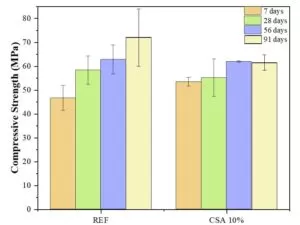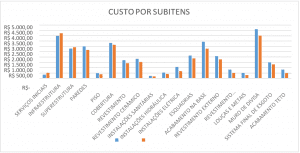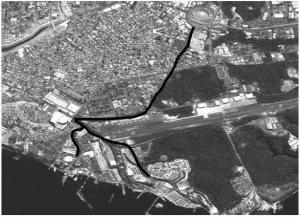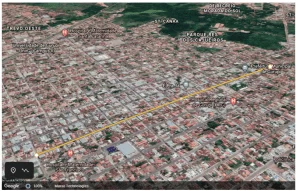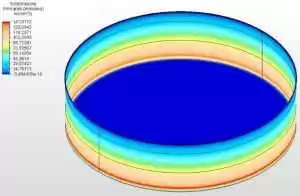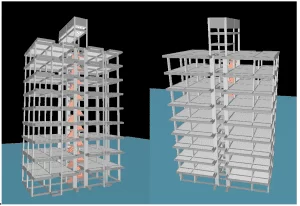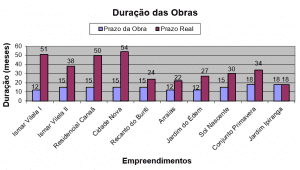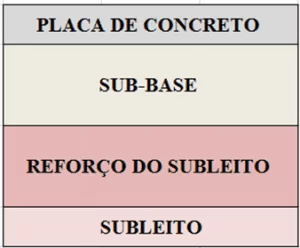ARAÚJO, Marcelo Almeida [1], SANTOS, Martha Jussara Paixão dos [2], PINHEIRO, Heunbner Pereira [3], CRUZ, Zoraide Vieira [4]
ARAÚJO, Marcelo Almeida; et. al. Comparative analysis of methods of Pavement-Hard Floor (concrete) x flexible (asphalt). Multidisciplinary Core Scientific Journal Of Knowledge. Year 01, Issue 11, vol. 10, pp. 187-196, November 2016. ISSN: 2448-0959
Summary
This article aims to compare the Hard Pavement-concrete with the Flexible Pavement-asphalt, studying what is the methodology adopted for the choice of Flexible Pavement deployment compared to the Hard Pavement, being the kind of Flexible pavement predominant paving, whereas the Hard Pavement has a higher durability and efficiency for the bearing of vehicles, mainly lorries. Knowing that the paving on Brazil's highways is a form of social, economic, cultural integration and/or policy and these roads are part of the development of regions, the establishment of an appropriate and quality floor is essential for ensure safety and efficiency at the point of interconnection of the regions.
Keywords: Pavement, transport, quality, budget, Applicability.
Problem Presented
In which situations the use of Rigid Pavement is more temporally and economically feasible that the Flexible Pavement?
Assumptions
The hard floor in concrete is recommended for heavy traffic lanes and bus lanes (BRT). To your construction features a higher cost compared to asphalt.
The flexible pavement is the most used for any type of highway, this type of pavement allows the Union of aggregate materials, it can be combined with the ground tire rubber, and enable the reuse of various materials through recycling.
1. INTRODUCTION
In Brazil, 80.3%, i.e. more than 1.3 million km of roads are not paved, the municipal roads are those who have less. Economic viability is the major obstacle to the implementation and completion of pavement in Brazilian cities. The hard floor (concrete) and flexible (asphalt) are the most widely used flooring types in the Brazilian road system.
The hard pavement is associated with the cement concrete, and a jacket made of concrete slabs that can be or not armed with steel bars, usually supported on a subfloor of granular material or materials stabilized with cement. The thickness is set according to the flexural strength of concrete plates and resistances of the underlying layers.
Flexible floors in your most are associated with asphalt mixtures composed primarily of aggregates and asphalt binders. This type of floor is one of the most traditional and solutions used in the construction and restoration of urban streets, roads and highways.
In most countries, the asphalt pavement is the main form of flooring. The same is true in Brazil, more than 95% of the roads were paved with asphalt material.
Are several reasons for intensive use in asphalt paving. Asphalt concrete provides strong Union households, allows flexibility controllable, is waterproof, easy to apply and handling when heated. Already the benefits of concrete flooring is the great resistance to deformation, effective distribution of tensions, greater abrasion resistance, high tire grip, great reflectivity (ideal for night driving), high security (less risk of aquaplaning, by having better grip) and high service life, being approximately 30 years, more than double the asphalt pavement. The hard concrete floor also will suffer less maintenance over your lifetime.
2. JUSTIFICATION
Joppert law (Decree Law nº 8,463 of 27 December 1945), emphasized on the importance of 40 construction of highways in Brazil, called the Golden Law of Brazilian highway system, with a remarkable evolution of 1950 1 road infrastructure brazilian, driven by the auto industry. In the Decade of 70 was marked by the large amount of construction of highways in the country.
Road transport is the most widely used means of transportation in Brazil, either on dirt road-gravel, stone-paving stones, concretada road-Hard Pavement and asphalt road-Flexible Pavement, whatever access, whether the goods, medicines, from transport by air, sea and rail, is always on the road the final destination of any person, product and merchandise.
The methodologies used for the best vehicles bearing on the roads, the concrete pavement and asphalt pavement-rigid-Flexible s is the most widely used, however, the Flexible pavement sovereignty in relation to the hard Pavement is visibly perceived Brazilian roads, there is a methodology to explain the deployment of Flexible Pavement's sovereignty, but the comparison of both floors is inevitable.
3. GOALS
3.1 GENERAL
Compare the main impacts related to use between the types of Hard floors (concrete) and flexible (asphalt) in the implementation of Brazil's highways, with a focus on durability and economic viability.
3.2 SPECIFIC
-Check what type of pavement more viable for mixed transport routes;
-Presenting comparative data on economic aspects, and productive time of the two types of floors;
-Analyze what are the advantages and disadvantages encountered in the use of pavement studied;
-Compare the run time, more materials found and the durability of each floor in relation to your cost benefit.
4. THEORETICAL FOUNDATION
4.1. PAVING HISTORY
The paving will evolve along the evolution of vehicles, the Brazil used slabs of stone floors, being the road shooting Union and industry (90 miles) linking Petrópolis to Juiz de Fora (photo)-first road to use as base/liner in macadam Brazil, after the 20th century, with the technological evolution of automotive vehicles, the Flexible Deck came to be adopted as the main floor of the Brazilian roads, at present, Brazil is the Country that has the lesser extent of paving of America Latina.
Pavement is the structure built of multiple layers on the earthwork of land and has the function of resist efforts, get loads of traffic from vehicles and redistribute to the Foundation soils. Giving good rolling conditions and providing satisfactory conditions of speed, safety, comfort in the transportation of people and goods.
A paved road correctly displays the regular surface and more adherent to the tires used in the means of transport, providing thus smaller risks with regard to the loss of control of the vehicle and ensuring response to any need for braking or sudden deviations.
The road pavement layers have various aggregates, each requiring specific technological features. For the aggregates for the production of Portland cement concrete for the works of rigid paving are required special conditions that differ from those adopted to concrete and buildings, bridge and other types of structures. It is necessary that the concrete used in the flooring resist traction, lower volumetric variations, less susceptibility to cracking and high durability, the environment and the abrasive action of the traffic.
5. COMPARATIVE ANALYSIS – HARD X FLEXIBLE PAVEMENT
5.1 HARD FLOOR
The hard pavement can be defined as one that features a coating layer with a higher stiffness at lower layers, absorbing almost all the voltages from the stresses and deformations. The rigid paving model is based on the implementation of hydraulic binders like cement to interconnection of the aggregates involved in concrete. Being your cement board main structural component.
The drive has a pavement durability and resists to the actions of the time, without need of maintenance and with time he is gaining more strength. Composing your structure basically under-Base (SB)-Little Structural contribution-pumping control/expansion/contraction-Cement concrete.
There is the possibility of the need for special treatment to subleito for sustainability, however, due to the characteristics of the hard floor as to stability, this potential may be considered non-existent, since the sub-base layer can meet those needs. In other words, a good earthworks and a good compression of a good result in the Hard Pavement.
5.2 FLEXIBLE PAVEMENT
The flexible pavement is characterized by no break and consists mainly of bituminous materials. Your base can be composed of several layers, as subleito, sub-base, base and finish. Their efforts are distributed vertically, this type of pavement has been applied in a manner that accentuated in recent decades, associated with this volume of resurfacing services, which are similar to the works of paving works.
The flexible pavement suffer diseases such as, for example: deformation due to the diesel oil (solvent for asphalt) and overloading, poured by a vehicle and braking and softens under the effect of heat and rain.
5.3 X FLEXIBLE RIGID PAVEMENTS
Based on the data on types of pavement studied it is possible to compare them at all levels and points addressed by getting a solid comparison without the cultural aspect involved, the application of asphalt pavement is predominant in comparison to concrete paving.
The rigid pavement structure is simpler compared to flexible, the layers of coating and base are joined into a single, performing the same functions as the base layers in asphalt pavement and may need just one more layer of subfloor and eventual settlement of the subleito of via.
In relation to the distribution of efforts: the Hard Pavement: absorbs most of the tensions, the distribution is done on a relatively larger area, quality of soil little structural behavior interferes with the low-distortion and more resistant to traction; Already the Flexible Pavement: the load is distributed in portions proportional to the rigidity of the layers, every layer suffer significant elastic deformation, the deformations up to a limit not lead to disruption, the quality of the soil is important, as it is submitted to high voltages and absorbs greater deflections. As shown in Figure 01.
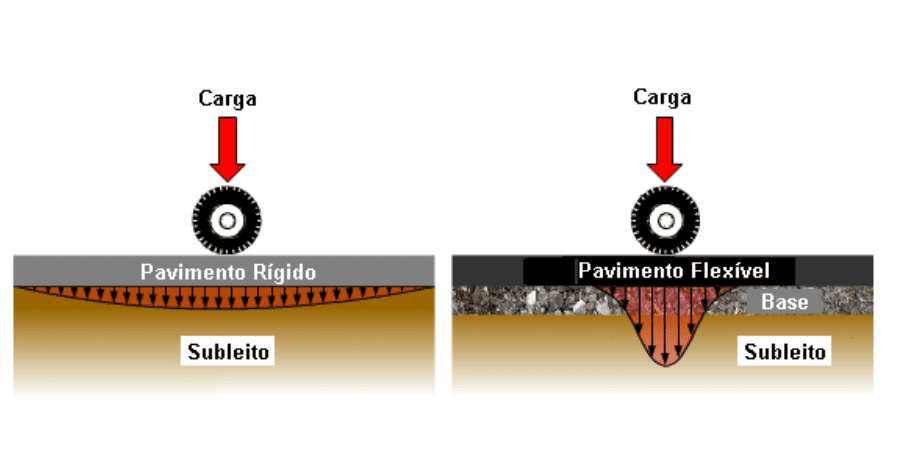
Source: questoesdeconcurso.com.br (adapted).
The adopted with hard floor care are needed in order to maintain the usefulness and quality of the structure, extending the shelf life while maintaining the security and design features. There is, from the floor, sizing guidelines for use of this pavement, taking into account the type of load that it will support and the traffic which will attend, ensuring safety and comfort to the user.
Defects in concrete pavement comes, for the most part, Executive or failure of the materials used, creating a need, besides the strict quality control in the construction, for routine maintenance. As part of this maintenance, pavement visual inspection for defects assessment. These defects are interpreted by type and severity to be observed according to existing standards created by the DNIT. Based on the data obtained, is calculated the pavement Condition index – ICP, indicating the necessity of realization of recovery services and how to procedê them.
The Hard pavement resists, on average, 25 to 30 years, in good condition, if it receives the necessary care. On the other hand, the cost is 30% more expensive if compared to the flexible pavement, oscillating from region to region.
For the Flexible Pavement, the main reasons appear degradations are due to normal wear and tear of time use and excessive loads applied to it.
Ranging from eight to 12 years, the thickness of the coating can be five, 15 or 20 centimeters, also according to the flow of vehicles. The excess weight of the trucks, as well as rain, can reduce the lifetime of the material. In Brazil, the asphalt is made to last about 10 years, but, due to lack of maintenance, resist, many times, six years.
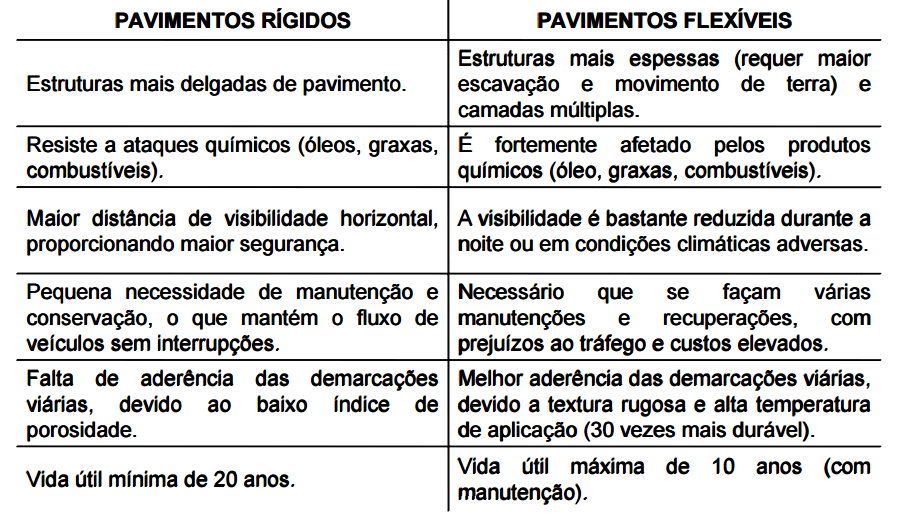
nte: ibracon.org.br (adapted).
When comparing flexible and rigid pavements, concluded that both types of decks are viable for deployment on Brazil's highways, being the Hard Floor as conducive to roads with greater intensity of load, however, it became clear that this is not a rule for the paving, the floors are chosen, besides the economic aspect, in accordance with the characteristic and the culture of the place, especially for a country long and of different characteristics, such as the different types of soil and climatic situations, This comparative analysis does not propose a Flexible Pavement the pavement replacement drive and Yes proposing another option constructively, even taking into account the lifespan of two floors and the predisposition to fatigue and more maintenance on your life.
For a deeper analysis of this comparison, it would be imperative that the exposure of two types of pavement the same weather conditions the same for both sites and the flow of vehicles too, and the concrete presents a useful life far superior to asphalt and a lower probability of defects, which could favor your choice, however, does not happen. Usually the rigid paving has better cost-effectiveness due to the small maintenance within the period of useful life of the pavement that is notably larger than the life of the flexible pavement.
REFERENCES
ABNT NBR 7207 (1992) use of pavement. Specification. Access in: 08 January 2015.
DNIT. Highway drainage manual. Ministry of transport. National Department of transport infrastructure. 2006. Access in: 08 January 2015.
http://oglobo.globo.com/brasil/no-brasil-80-das-estradas-nao-contam-com-pavimentacao-13710994. Access in: 12 January 2015.
http://www.dtt.ufpr.br/Pavimentacao/Notas/MOdulo%201%20-%20Introducao.pdf. Access in: 12 January 2015.
http://www.dtt.ufpr.br/Pavimentacao/Notas/MOdulo%201%20-%20Introducao.pdf] access in: 12 January 2015.
MACEDO, Wagner. Report of the 2nd Symposium on road works-2002 SQUEEGEE. Access in: 12 January 2015.
MAXSON Jr., Armando Eng. and Eng. Marco Rogério Greca (August 2003). Company booklet GRECA, asphalt. Access in: 12 January 2015.
[1] He holds a degree in Civil Engineering in College (ESTACIO DE SÁ-BA) in the year of 2009/2014 and is graduate student in road engineering by (School of SURVEYING-BA) in the year of 2015/2016.
[2] Degree in Urbanism at the University (UNEB-BA) in the year 2005/2010 also graduated in Civil Engineering in College (ESTACIO DE SÁ-BA) in the year of 2010/2015 and is graduate student in road engineering by (School of SURVEYING-BA) in the year of 2015/2016.
[3] He holds a degree in Civil Engineering in College (ESTACIO DE SÁ-BA) in the year of 2009/2014 and is Graiando in road engineering by Post (School of SURVEYING-BA) in the year of 2015/2016.
[4] Master in Regional Development and the environment by Universidade Estadual de Santa Cruz (2004). He is currently Assistant professor of the Universidade Estadual do Sudoeste da Bahia. Took over for a year and a half, the Dean of undergraduate studies pro of the Universidade Estadual do Sudoeste da Bahia. Experience in public administration, took over for two years as Municipal Secretary of health (2009) and Municipal Secretary of education (2010).

